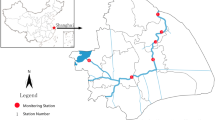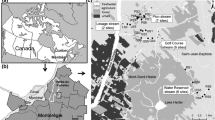Abstract
The Feitsui reservoir is a major water supply source for more than five million people in Northern Taiwan. The reservoir water quality has been good, but is threatened by eutrophication due to excessive nutrient input and siltation due to sediment loads. Recently, the water authorities in Taiwan have made considerable efforts to devise strategies using watershed conservation practices for the protection of Feitsui reservoir water quality. The control of non-point source pollution (NPS) represents one of the major strategies and the use of best management practices (BMPs) is under careful consideration. The objective of this study was to assess the effectiveness and cost of a full Feitsui watershed implementation of riparian buffer strips and other appropriate conservation practices. Based on the use of watershed simulation models and a statistical relationship between pollution reduction rate and the width and slope of a buffer strip, a methodology for the planning and design of riparian buffer strips was addressed. Data from field experiments were used to calibrate the coefficients of the regression equations. Several planning scenarios were evaluated by means of cost-benefit analysis coupled with net present value method. Data on local construction and maintenance costs for the selected design and location of buffer strips were used in the analysis. Based on several cost-benefit analyses, the scenario for installing buffer strips with 30 m width and 5% slope along both sides of tributary streams in the sub-watersheds with high nutrient (phosphorus) loadings was found to be most cost effective.
Similar content being viewed by others
References
Barling RD, Moore ID (1994) Role of buffer strips in management of waterway pollution: a review. Environ Manage 18(40):543–558
Chang CL, Lo SL, Yu SL (2006) Role of geographic information system (GIS) in watershed simulation by WinVAST Model. Environ Monit Assess 121(1–3):287–299
Chesapeake Bay Program (1995) Water quality function of riparian forest buffer systems in the Chesapeake Bay Watershed. The U.S. Environmental Protection Agency for the Chesapeake Bay Program, Annapolis
Guo QH, Ma KM, Yang L, He K (2009) Testing a dynamic complex hypothesis in the analysis of land use impact on lake water quality. Water Resour Manag (in press)
Hansen WJ, Orth KD, Robinson RK (1998) Cost effectiveness and incremental cost analyses: alternative to benefit-cost analysis for environmental remediation projects. Pract Period Hazard Toxic Radioact Waste Manag 2(1):8–12
Holvoet K, Gevaert V, Griensven A, Seuntjens P, Vanrolleghem PA (2007) Modelling the effectiveness of agricultural measures to reduce the amount of pesticides entering surface waters. Water Resour Manag 21(12):2027–2035
Hsieh CD, Yang WF (2007) Optimal nonpoint source pollution control strategies for a reservoir watershed in Taiwan. J Environ Manag 85:908–917
Jayakrishnan R, Srinivasan R, Santhi C, Arnold JG (2005) Advances in the application of the SWAT Model for Water Resources Management. Hydrol Process 19(3):749–762
Leeds R, Brown LC, Sulc MR, VanLieshout L (1994) Vegetative filter strips: application, installation, and maintenance. Ohio State University Extension, Columbus, AEX-467
McKague KJ, Cao YZ, Stephenson DE (1996) The CREAMS Model for evaluating the effectiveness of buffer strips in reducing sediment loads to wetlands. In: Mulamoottil G, Warner BG, McBean EA (eds) Wetlands environmental gradients, boundaries, and buffers. CRC, Boca Raton, pp 251–261
Morschel J, Fox DM, Bruno J-F (2004) Limiting sediment deposition on roadways: topographic controls on vulnerable roads and cost analysis of planting grass buffer strips. Environ Sci Policy 7:39–45
Neitsch SL, Arnold JG, Kiniry JR, Williams JR, King KW (2002) Soil and water assessment tool theoretical documentation, Version 2000. USDA, Temple
Norman AJ (1996) The use of buffer strips to protect wetlands in Southern Ontario. In: Mulamoottil G, Warner BG, McBean EA (eds) Wetlands environmental gradients, boundaries, and buffers. CRC, Boca Raton, pp 263–278
Osborne LL, Kovacic DA (2006) Riparian vegetated buffer strips in water-quality restoration and stream management. Freshw Biol 29(2):243–258
Shoemaker L, Lahlou M, Doll A, Cazenas P (2002) Stormwater best management practices in an ultra-urban setting: selection and monitoring. Department of Transportation Publications Warehouse, Landover
Tisdale TS, Kaighn RJ, Yu SL (1996) The Virginia storm (VAST) Model for Stormwater Management—User’s Guide Version 6.0. University of Virginia, Charlottesville
U.S. EPA (2004) The use of best management practices (BMPs) in Urban Watersheds. EPA/600/R-04/184. September. Office of Research and Development, Washington
WERF (2003) Post-project monitoring of BMPs/SUDS to determine performance and whole-life costs. IWA, London, Project Number: 01-CTS-21T
Yu SL, Kaighn RJ (1992) VDOT manual of practice for planning stormwater management. Federal Highway Administration, FHWA/VA-R13, Virginia Department of Transportation Research Council, Charlottesville
Yu SL, Stanford RL, Zhai YY (2003) Virginia Stormwater Model for Windows—user’s manual Version 1.0. University of Virginia, Charlottesville
Author information
Authors and Affiliations
Corresponding author
Rights and permissions
About this article
Cite this article
Chang, CL., Hsu, TH., Wang, YJ. et al. Planning for Implementation of Riparian Buffers in the Feitsui Reservoir Watershed. Water Resour Manage 24, 2339–2352 (2010). https://doi.org/10.1007/s11269-009-9554-7
Received:
Accepted:
Published:
Issue Date:
DOI: https://doi.org/10.1007/s11269-009-9554-7




